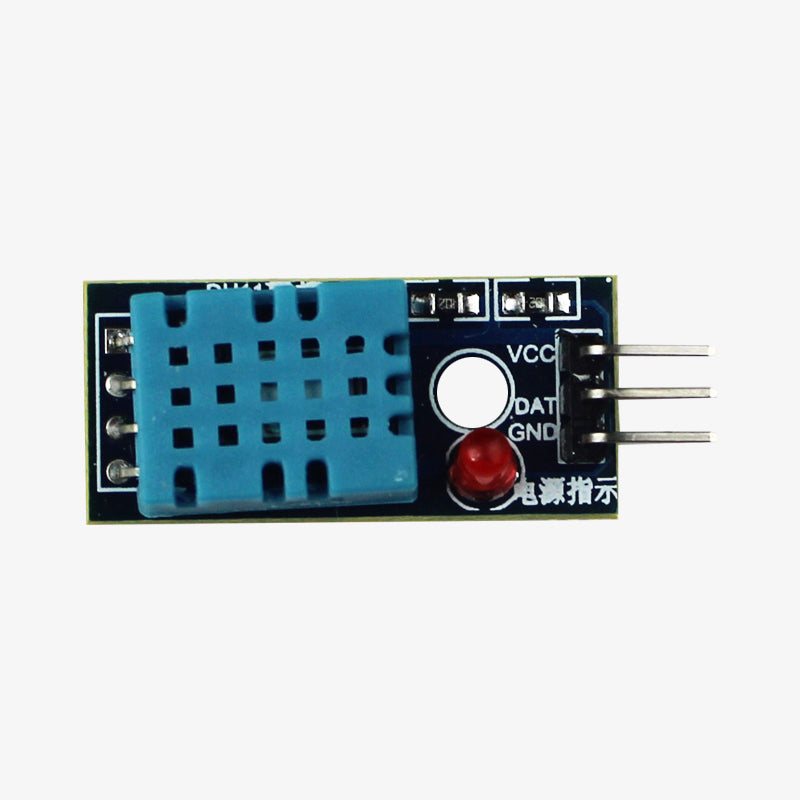How do temperature and humidity sensors work?
Introduction:
Temperature and humidity sensors play a crucial role in various applications, ranging from weather monitoring to industrial processes and smart home technologies. These sensors are designed to measure and provide accurate data about the surrounding environment, allowing for informed decision-making. In this article, we will delve into the working principles of temperature and humidity sensors.

Temperature Sensors:
1. Thermocouples:
- Thermocouples are based on the Seebeck effect, where a temperature gradient generates an electric voltage.
- Different metals are used, and the voltage produced correlates with the temperature difference between the two junctions.
2. Thermistors:
- Thermistors are temperature-sensitive resistors whose resistance changes with temperature.
- They are classified into NTC (Negative Temperature Coefficient) and PTC (Positive Temperature Coefficient) types.
- NTC thermistors exhibit decreased resistance with rising temperature, while PTC thermistors show the opposite behavior.
3. Infrared (IR) Sensors:
- Infrared temperature sensors measure the infrared radiation emitted by an object.
- They use the Stefan-Boltzmann law to convert the infrared radiation into temperature readings.
- Non-contact and suitable for measuring the temperature of moving or hazardous objects.
4. Resistance Temperature Detectors (RTDs):
- RTDs rely on the fact that the electrical resistance of metals changes predictably with temperature.
- Platinum is commonly used in RTDs due to its stability and linearity.
- The change in resistance is converted into temperature values using calibration curves.
Humidity Sensors:
1. Capacitive Humidity Sensors:
- Utilize the capacitance change in a humidity-sensitive capacitor.
- The humidity-dependent dielectric constant of a hygroscopic material affects the capacitance.
- As humidity changes, so does the capacitance, providing a measure of relative humidity.
2. Resistive Humidity Sensors:
- Work on the principle that the electrical resistance of certain materials changes with humidity.
- A humidity-sensitive material, often a polymer, alters its resistance when exposed to varying moisture levels.
- The resistance change is then correlated to the relative humidity.
3. Gravimetric Humidity Sensors:
- Measure humidity by assessing the mass change of a substance as it absorbs or desorbs moisture.
- A sensitive material, such as a hygroscopic salt, gains or loses mass in response to humidity variations.
- The mass change is converted into a humidity reading.
4. Thermal Conductivity Humidity Sensors:
- Based on the principle that the thermal conductivity of air changes with humidity.
- Consist of a heated and an unheated element; as humidity increases, the thermal conductivity changes, affecting the temperature difference between the two elements.
- This temperature difference is then translated into a humidity reading.
Calibration and Accuracy:
Both temperature and humidity sensors require calibration to ensure accurate and reliable measurements. Calibration involves adjusting the sensor's output to match a known reference. Environmental conditions, manufacturing variations, and sensor aging can all contribute to the need for periodic calibration.
Conclusion:
Temperature and humidity sensors are indispensable in a wide array of applications, providing essential data for processes ranging from climate control to industrial automation. Understanding the diverse principles behind these sensors - whether based on electrical properties, radiation, or physical changes - allows for informed choices when selecting the most suitable sensor for a particular application. As technology advances, these sensors continue to evolve, offering improved accuracy, reliability, and versatility in measuring and monitoring environmental conditions.
Comments
Post a Comment